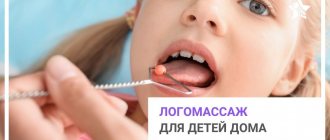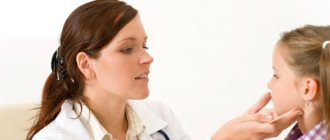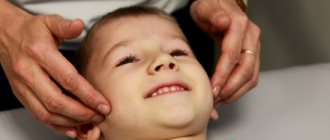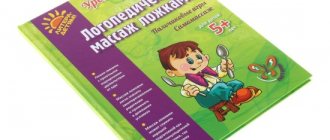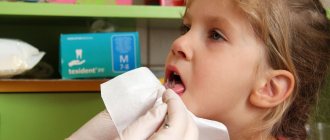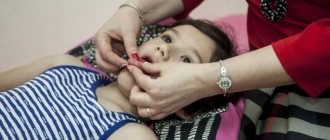Home — About speech therapy — Speech therapy massage
| Kiseleva Elena Anatolyevna speech therapist of the highest category, more than 20 years of experience More about the specialist |
Why was there a need for speech therapy massage in working with speech disorders, especially such as: SRD (delayed speech development), motor alalia, dysarthria, disorders of the pronunciation of individual sounds. To do this, we will remember the stages of speech formation in children and when we can talk about the occurrence of a particular disorder.
Goals of speech therapy tongue massage
This procedure performs the following tasks.
- ✪ Stimulation of speech in case of delayed intellectual development of a child.
- ✪ Reducing increased salivation.
- ✪ Reducing the increased tone of the muscles that are involved in articulation.
- ✪ Activation of muscle tissue that has insufficient contractility.
- ✪ Improved kinesthetic sensations.
- ✪ Creation of suitable conditions for the development of voluntary movements of the articulation apparatus.
- ✪ Improving the elasticity of muscle fibers.
Speech therapy tongue massage for children is effective even with severe speech disorders. With its help, you can correct the pronunciation of sounds, improve sound clarity, and normalize the tone of the muscles responsible for the speech apparatus. Even if the patient has pronounced neurological symptoms, the use of competent massage can give good results.
How speech correction occurs using speech therapy massage
The muscles of the mouth, lips, cheeks, tongue, jaw and facial muscles, the muscles of the neck, shoulders and respiratory muscles form a single muscular system involved in creating the child’s speech function - all this forms a single muscular system. Numerous studies have shown that the elasticity of muscle fibers, their volume, strength and contractile function, and performance are significantly increased with the help of massage.
It is no coincidence that all professional athletes use the services of massage therapists. In addition, massage can reduce the tone of spastic muscles and increase the tone of flaccid muscles. Therefore, a targeted study of the condition of the speech muscles and targeted massage effects can increase the effect of speech therapy, enhanced by speech therapy massage. This reduces the time required for treatment.
Speech therapy massage is the most gentle therapeutic method. For example, in the case of treating stuttering caused by spasms in the muscles of the speech apparatus, a speech therapy massage specialist will begin working with the muscles furthest from the spasmed muscles in order to cause a reflexive gradual decrease in spasticity of the muscles of the target group. Working through a carefully constructed chain of muscles, using special massage techniques, the specialist will begin to work on the main muscles associated with the pathology only when they are most susceptible to the effects, and the child does not experience discomfort.
Conditions for speech therapy tongue massage
The doctor's office should be warm and comfortable enough. The specialist’s hands must be warm and immaculately clean, and his nails must be cut short. The optimal time for massage is two hours after eating. Before the procedure, the child’s mouth must be thoroughly cleaned.
The approximate number of sessions is 20. The exact number is determined by the speech therapist, depending on the severity of the speech defect. To achieve maximum effect, the procedure is carried out every day. The duration of the session varies from 5 to 25 minutes, depending on the severity of the disorder.
Before starting the session, it is important for the patient to take the correct and most comfortable position. Here are the most optimal positions for the procedure.
- ✪ The child lies on his back, a special cushion or small pillow is placed under his neck. In this case, the head should be fixed and slightly tilted back.
- ✪ There is another option - the child simply sits in a chair that has a high headrest (this is a great way for those children who feel nervous when asked to lie down on the couch).
- ✪ During speech therapy massage, small children can be in a stroller in a half-sitting position, while their head should also be slightly tilted back.
- ✪ If a child is very afraid of various medical procedures, you can sit him on the parent’s lap.
During the massage, the patient must be in a calm state; pain and discomfort are not allowed. If a small patient is not in the mood for the procedure, in the first session you can limit yourself to light massaging movements in the facial area. It is acceptable to conduct sessions in the presence of parents if the child feels more relaxed when loved ones are nearby.
Immediately after the procedure, it is recommended to provide the child with complete rest for 15-20 minutes, after which he can go home and go about his daily activities. It is worth noting that even with the help of the most professional massage you cannot achieve an instant effect: the first results can only be noticed after a few weeks.
Massage of the inner cheek
Massage of the chewing, cheek and zygomatic muscles, and especially the pterygoid muscles, can be carried out with the speech therapist’s fingers positioned inside the child’s mouth. When massaging the left cheek, the speech therapist places the thumb of the right hand in the mouth, the remaining fingers remain outside. Massage movements are carried out with the thumb on the inner surface, and with the remaining fingers on the outer surface of the cheek. When massaging the right cheek, the index and middle fingers are inserted into the oral cavity, the thumb is on the outer surface of the cheek, performing the basic massage movements. Massage of the inner surface of the cheek can be carried out in different positions of the mouth: open and wide open - and with the jaws closed. The main techniques used are rubbing and kneading.
- Circular movements along the cheek from the periphery to the center and vice versa.
- Spiral rubbing and kneading with fingertips in a circle.
- Kneading in a circular motion and rubbing in the area of the masticatory muscle.
- Rubbing movements from the cheekbone down to the corner of the mouth. All fingers, except the thumb, are located at the edge of the zygomatic bone. Thumb - on the inside of the cheek.
- Rubbing spiral movements. All fingers, except the thumb, are located in the area of the tragus and earlobe, gradually moving towards the corner of the mouth.
- Spiral rubbing of the temporomandibular (zygomatic) joint area. In the open mouth position, find the “hole” at the earlobe. Massage the pit area with your index and middle fingers. The thumb serves as a support on the inside of the cheek.
Actions for increased and decreased muscle tone
Speech therapy massage for low muscle tone begins with light massaging movements of the shoulder girdle. After this, the specialist touches those articulatory areas that are least active in the child. For example, movement disorders can occur when the chewing muscles or cheekbone muscles are underdeveloped. In this case, this area needs to be particularly actively affected.
The force of pressure should increase gradually, with each session, and the pressure, despite its intensity, should not cause pain in the patient.
For hypertension, a massage with a relaxing effect is prescribed. All movements are made in the direction from the periphery to the central part, and the pressure force should be small, otherwise the condition of the articulatory apparatus may deteriorate. The movements should be sliding and slightly pressing. Each movement should be repeated approximately 8 times. The pace of the massage is slow (it is the slow pace that reduces the degree of tissue excitability). Simultaneously with the impact on muscle tissue, the specialist asks the child to perform passive head movements. This means that the patient must slowly turn their head clockwise and then counterclockwise. Thanks to this technique, it is possible to relax the neck muscles, which helps reduce the increased tone of the tongue.
During various techniques, not only massage of the tongue muscles is performed. The doctor makes stroking movements (longitudinal and transverse) in the area of the forehead and bridge of the nose, presses on the hair growth area, and makes tapping movements in the area of the lip muscles to completely relax them.
Please note: some children are diagnosed with increased and decreased tone of various muscles. In this case, a differentiated massage is carried out: the specialist acts on some parts more actively, while others massage with relaxing movements. This approach requires high qualifications and a lot of practice.
Stages of speech formation
The first stage is preparatory (up to 1 year).
During the first month, the child reacts to voice and intonation;
2-3 months of walking;
3-6 months babbling speech.
After 6 months Individual syllables appear (by imitation). Adopts tone, tempo, rhythm, melody, intonation. Connects certain sound combinations with an object. At the same time, he reacts to the situation, intonation, words, and thereby remembers the words and the reaction to them.
7-9 months The range of words repeated after adults is expanding.
10-11 months A reaction to words appears, regardless of the situation and intonation of the speaker. At this time, the conditions in which speech is formed (correct speech of others, a calm, friendly atmosphere) become especially important.
By the end of 1 year, the first words appear.
Second stage (1-3 years).
Either syllables or words of a simple syllabic structure are used. One word can mean everything: an object, a request, a feeling. Speech is situational in nature. During this period, the child actively uses gestures and facial expressions. They replace his lack of words. By the end of the second year, phrasal speech is formed.
And over the course of 2-3 years of life, a child experiences a significant accumulation of vocabulary. At this time, the understanding of an adult’s speech significantly exceeds pronunciation capabilities (understands more than he can say).
If at this time you notice any deviations or discrepancies with the norm, we can talk about delayed speech development.
Read more about developmental disorders and how to determine that a child has a delay in speech development
Third stage (3-7 years).
During this period, the skill of auditory control over one’s own pronunciation and the ability to correct it in some possible cases develops more and more. The vocabulary continues to actively increase. It is during this period that the sound side of speech is actively formed. Sound pronunciation is fully formed by the age of 6 years. If the sounds are not formed by this time or the pronunciation is formed incorrectly, we can talk about such diagnoses as: motor alalia, dysarthria, impaired pronunciation of individual sounds.
Contraindications to speech therapy massage
There are some restrictions to carrying out such a procedure. Thus, massage is not prescribed for the following conditions:
- ✪ ARVI and other viral infections;
- ✪ herpetic rashes on the face and lips;
- ✪ inflammatory eye diseases;
- ✪ inflammatory processes in the oral cavity;
- ✪ increased body temperature (in this case, the procedure is postponed until complete recovery).
Massage should be prescribed with caution to children who suffer from convulsive syndrome. If the child behaves restlessly during the procedure, shows fear and aggression, the massage should be stopped and try to calm the patient. For severe anxiety, mild sedatives may be prescribed.
Contraindications for logomassage:
- acute inflammatory processes;
- infectious, fungal skin diseases;
- fungal or allergic skin diseases;
- lesions of the oral mucosa;
- herpes rash on the lips;
- furunculosis;
- conjunctivitis;
- diseases of the oral cavity: gingivitis, stomatitis;
- nosebleeds;
- various forms of allergic reactions: diathesis, urticaria and others;
- Quincke's edema;
- enlarged lymph nodes;
- epilepsy;
- oncology.
I hope the article was useful.
Oral massage for impaired sucking and swallowing in newborns
Incorrect latching on the breast by a baby during breastfeeding and swallowing disorders in infants can lead to the baby's refusal to eat, stagnation of food in the throat, constant regurgitation, and poor weight gain. A speech therapist, using speech therapy orofacial massage techniques (massage of the mouth, lips, cheeks), can help in this case.
By examining the baby's oral cavity with a gloved finger, a specialist can evaluate the functions of sucking, retraction, tongue position, and positioning of the larynx during feeding. Corrective speech therapy massage sessions for infants are carried out before feeding so that the child does not get tired and last only 2-5 minutes. The massage can be combined with the “finger feeding” procedure, when breast milk flows from a bottle through a tube to the finger that the baby sucks.
What methods and techniques of speech therapy massage exist?
The following basic techniques are used for speech therapy massage:
- Touching: includes kneading and stroking the face and neck with fingers and objects of varying textures and temperatures (brushes, soft toys, fabrics, wet paper towels, cold sponges).
- Pressure: Involves applying varying levels of pressure (ranging from “light” to “felt”) on the oral structures and face with the fingers of sterile gloved hands.
- Vibration: includes the use of various vibration massagers with different attachments on external and internal oral structures: special Five Vibe vibrators for hyposensitive children, Z-Vibe - for stimulation of oral structures (for example, gums). Vibrating toothbrushes are also used to stimulate oral structures. In the absence of special vibrators, vibration techniques are performed with gloved fingers.
- For independent stimulation of oral structures, children are offered special chewing tools Grabber or Y-Chew.
- To work with young children, Preefer and Animal Tips probes are used, which can be dipped in children’s favorite treats so that the baby becomes interested and actively participates in the treatment process.
Sensory massage stimulates internal oral structures to help a child who is overly sensitive to touch become calmer and more relaxed. Teaching feedback about the movements and functions of the speech system helps the child increase awareness of oral-motor functions and “wake up” their mouth by increasing the muscular response of the lips, tongue and jaw.
Stimulation using vibration of the oral structures and bones of the skull allows the child to better feel the position and role of all elements of the speech system, activates his vestibular system, helps reduce pain due to spasms and reduce oral sensitivity.
